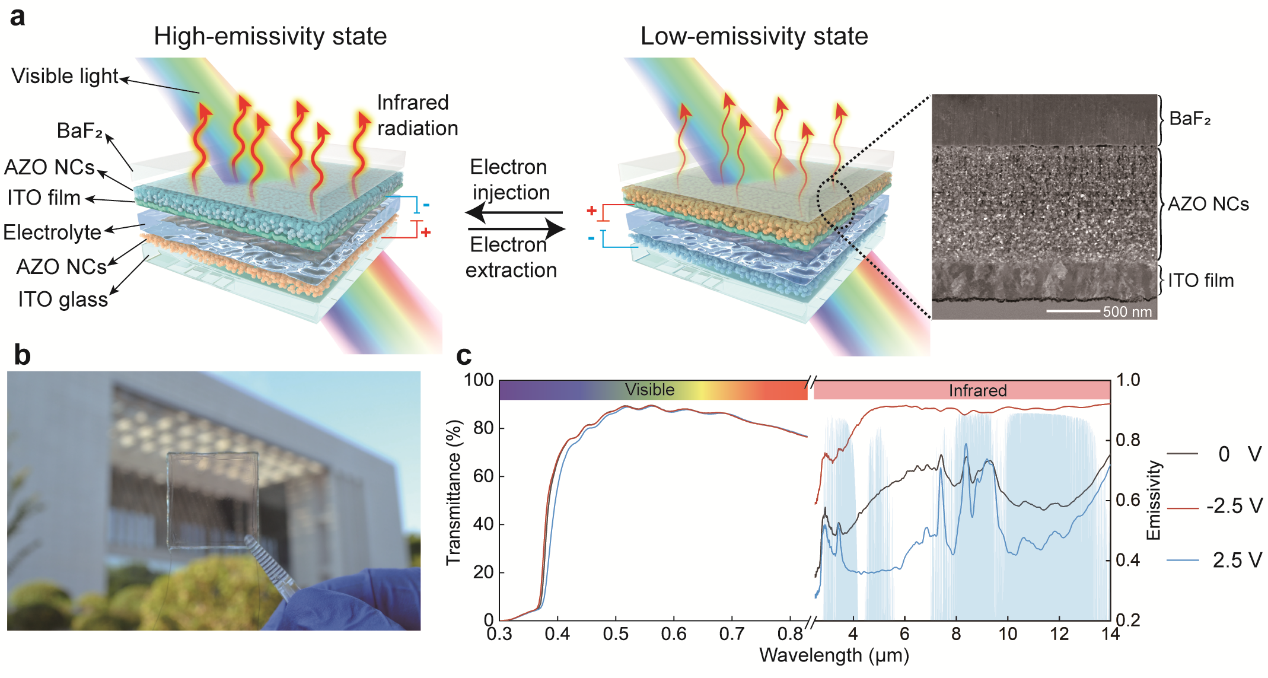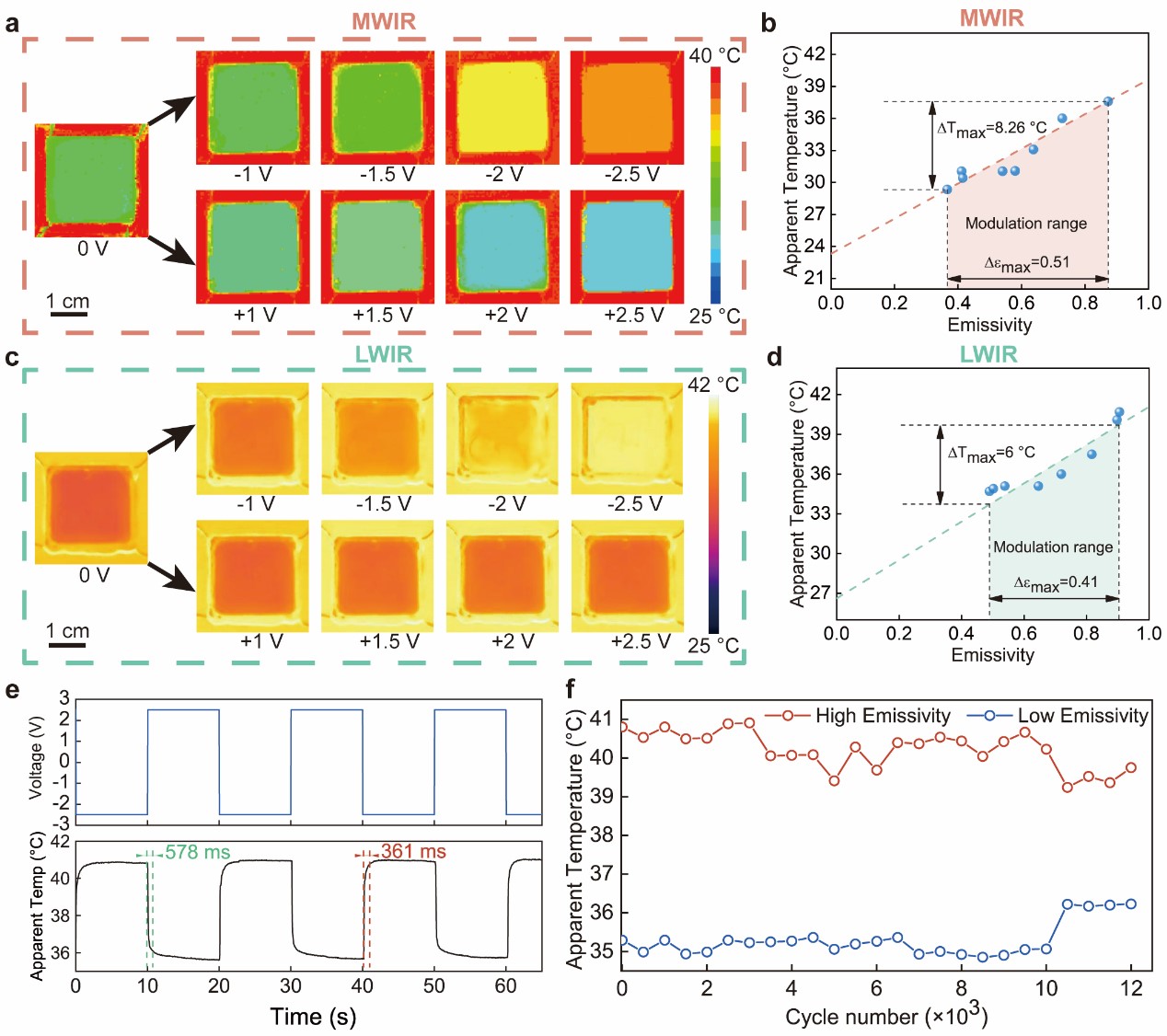Recently, a team from College of Aerospace Science and Engineering proposed a novel mechanism for dynamically regulating infrared emissivity by utilizing reversible electron injection/extraction of aluminum doped zinc oxide nanocrystals to dynamically regulate their localized surface plasmon resonance absorption. Through device structure design, a transparent dynamic infrared emissivity regulator has been developed for the first time, providing the possibility of independently and dynamically controlling visible light color and infrared radiation characteristics. The research findings, titled "Transparent dynamic infrared emissivity regulators" were published online on August 22nd in Nature Communications. (DOI: 10.1038/s41467-023-40902-w)

Figure 1 Schematic diagram of the principle, optical photos, and spectral characteristics of transparent dynamic infrared emissivity regulator
The transparent dynamic infrared emissivity regulators can achieve independent modulation of the infrared emissivity while maintaining a high visible transparency (84.7% at 400–760 nm). The regulators show high degree of emissivity regulation (0.51 at 3–5 μm, 0.41 at 7.5–13 μm), fast response (< 600ms), and long cycle life (> 104 cycles). This transparent infrared emissivity regulator provides opportunities for applications such as on-demand smart thermal management, multispectral displays, and adaptive camouflage.

Figure 2 The performance of transparent dynamic infrared emissivity regulator
Doctoral candidate Jia Yan is the first author and Liu Dongqing and Cheng Haifeng are corresponding authors, and these authors are all from College of Aerospace Science and Engineering. National University of Defense Technology is the independent corresponding unit of this paper. In recent years, the team has achieved a series of basic research results in the field of optical functional materials and published papers in journals such as Nature Communications, Science Advances, Advanced Materials, and Advanced Functional Materials, laying the foundation for the subsequent advancement of related materials into applications.
Written by: Liu Dongqing





